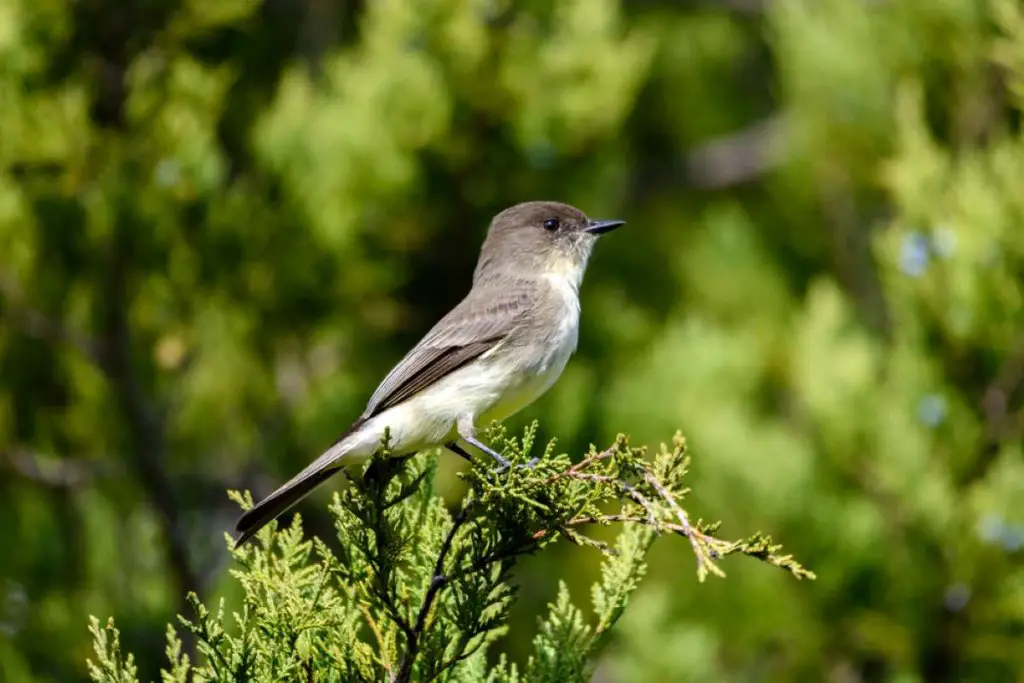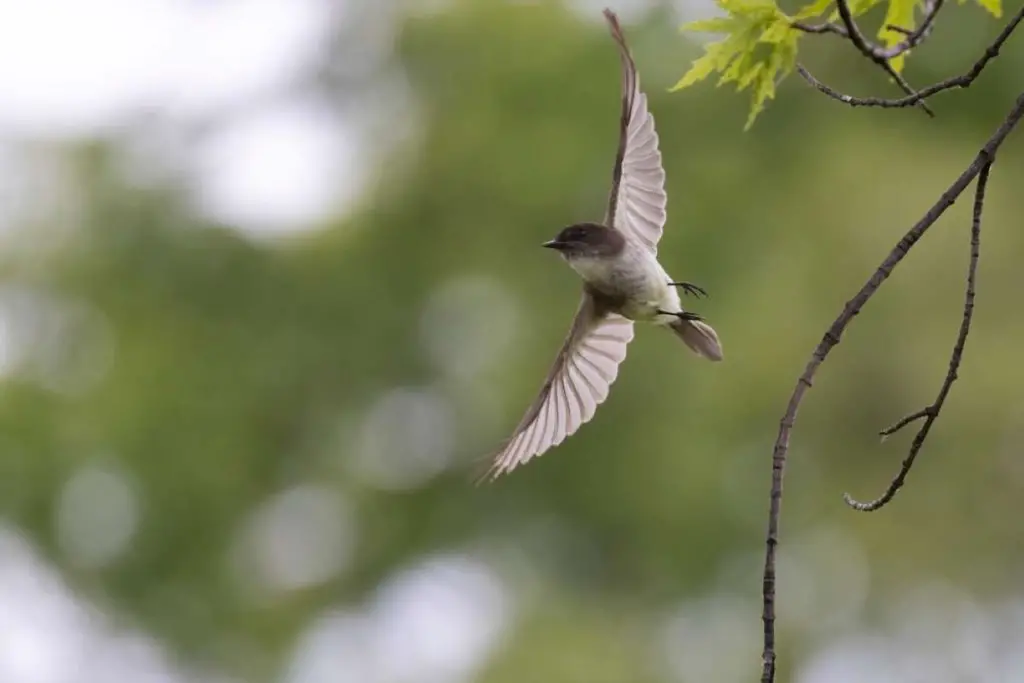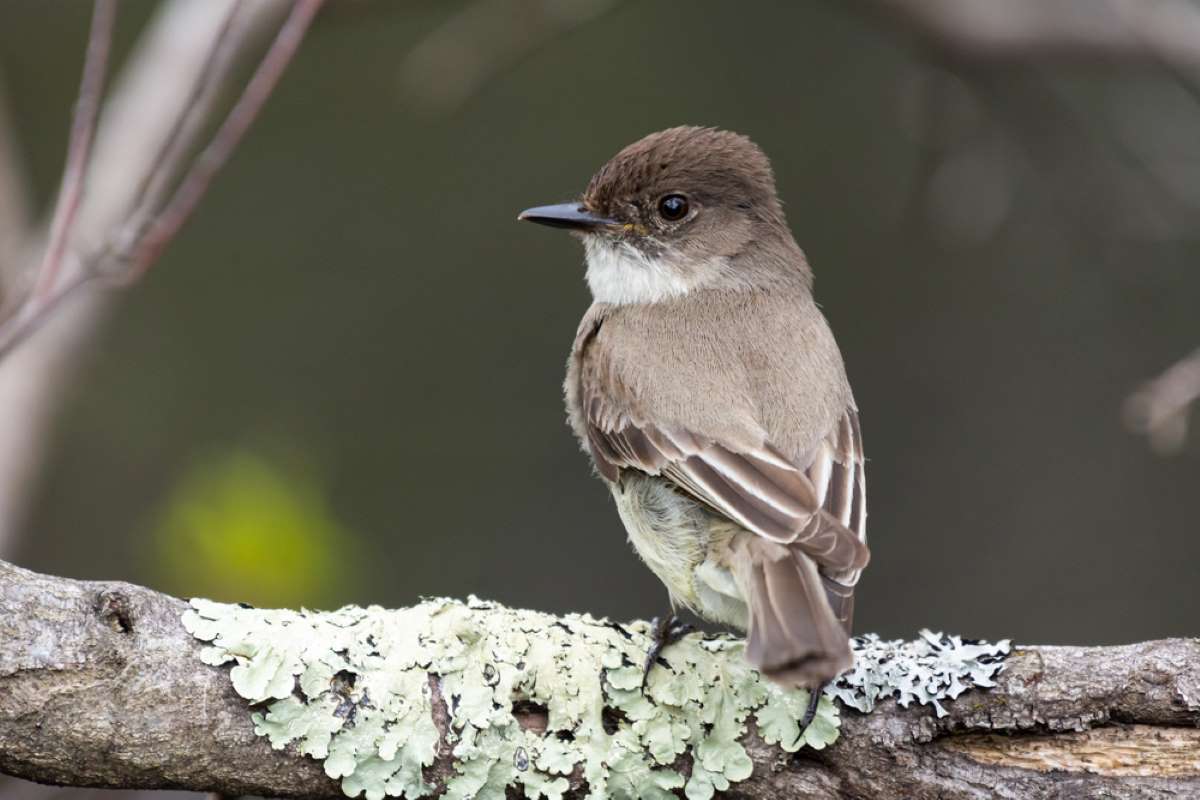The Eastern Phoebe, Sayornis phoebe, is a small songbird that is common to eastern North America. Known as a flycatcher, male Eastern Phoebes commonly make a raspy 'fee-bee' call during spring and summer. Both males and females call to each other with soft 'chips.'
Eastern Phoebes sing a two-part song that sounds like ‘fee-bee’. Some males may create a variation with more syllables that sounds like ‘fee-b-b-bee’. Females do not sing.
What Sound Does An Eastern Phoebe Make?
Male Eastern Phoebes sing a two-part song that sounds like ‘fee-bee’. Their song is raspy and short, lasting about 2 seconds. This bird sound is what gives the Eastern Phoebe its common name. Eastern Phoebes commonly sing at dawn and dusk.
Some Eastern Phoebes sing songs that sound like the above-mentioned ‘fee-bee’ while others sing a slight variation that sounds like ‘fee-b-b-bee’. These two song types vary according to each bird. Sometimes their song can actually be confused with the Black-capped Chickadee’s song, though the Chickadee has a higher-pitched, sweeter song than the Eastern Phoebe.
What Is The Call Of The Eastern Phoebe?
The Eastern Phoebe’s call sounds like a soft ‘chip’. Females and males use these calls as forms of communication. Males make a chattering call when they show a possible nesting site to a female. Females make bird calls even though they don’t usually sing.
Songbird calls usually serve as communication or warnings of danger between pairs or between members of flocks. In addition to these birdcalls, Eastern Phoebes will snap their bills together, making a loud sound to ward off intruders. Eastern Phoebes are vulnerable to snakes, crows, House Wrens, and Jays.

What Are The Colors Of Eastern Phoebes?
Eastern Phoebes have grayish-brown feathers on much of their upper bodies. They have dirty gray breast feathers and a white throat. They also have a slightly darker-colored head. Eastern Phoebes have buffy (orange-colored) underparts that turn white during breeding season. These small birds are often considered drab or plain because of their coloring.
Each wing has 2 faint buff-colored bars on each wing. Eastern Phoebes can be distinguished from other flycatchers in North America because they do not have eye rings or wingbars and have an all-dark bill (beak). Along with their distinctive birdsong, Eastern Phoebes are known for their tail wag while perching on branches. Sometimes Eastern Phoebes are confused with Eastern Wood-Pewee, though the Wood-Pewee have wing bars, and the lower part of their bill is a lighter color.
What Does The Eastern Phoebe Eat?
The Eastern Phoebe eats mainly insects. These songbirds feed on wasps, flies, grasshoppers, bees, spiders, and ticks. Eastern Phoebes can also hover and pick out insects from plants. During the winter, the Eastern Phoebe eats berries and small fruits.
Eastern Phoebes are classified as Tyrant flycatchers in the Tyrannidae family. There are at least 36 species of flycatchers native to North America. Flycatchers are noted for their ability to sit and wait for food to come to them. When Eastern Phoebes spot a flying insect nearby, these birds strike and grab the bug right from their air.

Does The Eastern Phoebe Migrate?
Yes, the Eastern Phoebe is a migratory songbird. During the winter, this bird species frequents Mexico and the southern US. The Eastern Phoebe is notably one of the earliest migrant birds in the spring, and their arrival signals that spring is beginning. They migrate to the northeastern US and Canada by mid-March for breeding. Eastern Phoebes return to the same nesting places each year and will often reuse nests.
Eastern Phoebes are very adaptable to the urbanization of North America. Eastern Phoebes prefer to live in wooded areas, near streams, and on farmland near water. They build their nests in protected nooks under bridges or houses. Eastern Phoebes have not suffered population decline, likely due to their adaptability of nesting sites.
Phoebe nests are made of mud and grass, and females can raise 2 broods during the breeding season. Eastern Phoebe nestlings have a 15-16 day incubation period. The young then leave the nest around 16 days after hatching.
Even though Eastern Phoebes are not common backyard birds, they are drawn to suet, mealworms, and water sources. If you’d like to attract the Eastern Phoebe, plant small fruit bushes and provide these food sources. These songbirds may visit your outdoor space!

